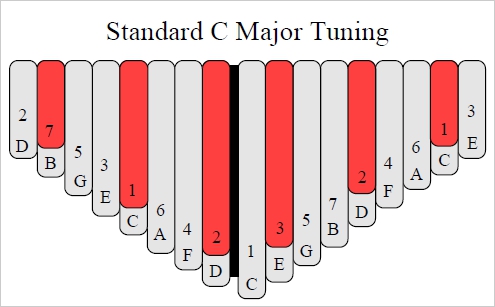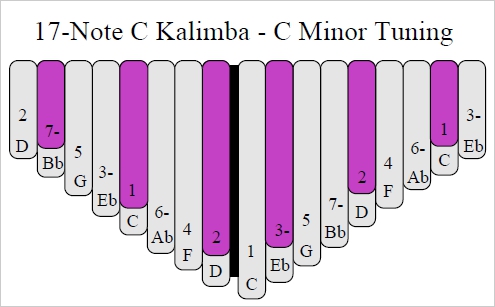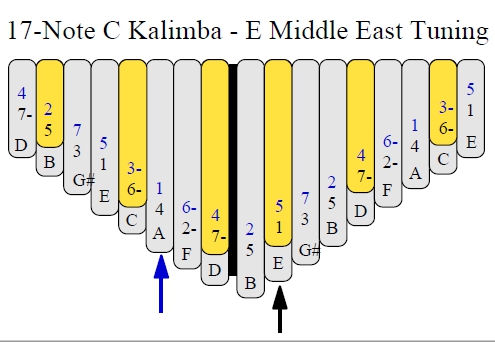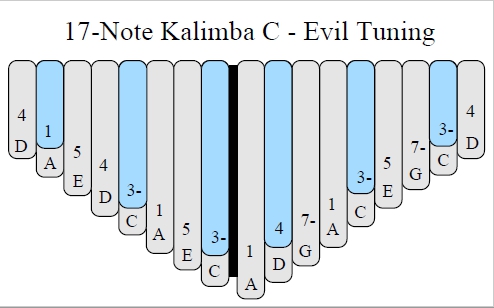If you ever get to the point where you feel your kalimba is old hat, or you cannot think of anything new to do on it, you need to come back to this article.
By retuning your kalimba to a new tuning, you basically get a new instrument that presents you with a new world view and plays new music, all for the price of… the five or ten minutes it will take for you to retune your kalimba.
You would be amazed – these tunings sound so rich and amazing and different! Just listen to each one. Each is a land I would love to explore.
I do get bored. And when I get bored, I look for something interesting, sparkling, amazing – something new and different. But not too new – if it is totally different from anything I know, I also tend to get confused or overwhelmed.
But here’s the deal: if you are bored with your kalimba because you have gotten too good, you can take those mad kalimba playing skills to a whole new platform. You can have the experience of exploring a totally new kalimba scale, with all the goosebumps and thrills of a new land, but unlike the first times you explored the kalimba, you are now GOOD at playing kalimba.
I find that exploring new kalimba tunings – each like a new country with strange, new and exotic music – empowers me and gives me renewed enjoyment on my kalimba journey.
So – I invite you to pick your adventure. The mystical minor? The enchanting Middle Eastern scale? Or the retro R&B kalimba feel full of African resonance with the sort of tuning that Maurice White used with his band, Earth, Wind & Fire?

The standard tuning on the 17-Note kalimba in C is… C Major! And there are so many things you can do in this standard C major tuning. In fact, the four instructional downloads and one book that are written for the 17-Note kalimba in C all assume you are in the standard C tuning. However, this article is about what you can do in some other tunings. The C Major tuning is presented here as a reference for the other tunings.
Of course, there are now a great many instructional resources for the 17-Note Kalimba in C.

When I hear the major-tuned kalimba, I think it just cannot get any more pretty than this – and then I hear a minor-tuned kalimba, and I am totally struck by how charming this little instrument can sound.
There are no instructional resources for the 17-Note Kalimba in C minor, but I did write a book for the Alto Kalimba in G minor, which is analogous to the 17-Note in C minor. In other words, if you want instructional material, everything you can play on an Alto in G minor can also be played on the 17-Note Kalimba in C minor. The tablature all works, but the sound recordings will be in a different key. You can get the Alto G minor download here.

The first 15 seconds of this music emphasize E as the root, and have a very Middle-Eastern sound. At 15 seconds, the music shifts to emphasize A as the root, and we have a classical harmonic minor scale, great for Spanish music. The music goes back and forth between these two modes… which is the main push and pull of this kalimba tuning.
I wrote a very nice download of music for the 17-Note Kalimba in this Middle Eastern tuning.

This is my guess as to what Maurice White’s tuning was. Maurice White, founder and leader of Earth, Wind & Fire until 1996, turned millions of people on to the kalimba. (“Evil” was one of the songs on which he famously played kalimba.) His idiosyncratic minor pentatonic tuning resonates with an African vibe.
Learn more about the Evil Tuning used by Maurice White.
At this point in time, you have four options, and they are probably not the ones you think they are:
(1) You could choose to leave your kalimba in its standard tuning. This tuning was chosen for a reason – it is very simple, very useful, and it can play thousands of songs.
(2) You could choose one of these exotic tunings, take a few minutes to learn about how to tune your kalimba, and you could change the tuning of your kalimba to one of these exotic tunings. It is not that hard – most tines won’t need to be retuned, and the ones that do need to be retuned will only change by a little bit. And you can always tune back to what the tuning was before.
(3) If you don’t feel you can accomplish the retuning, or you believe you can’t because you tried to do it and failed, or if you just don’t want to be bothered with doing the retuning – don’t worry, I’ve got you covered. Send your kalimba in to the Kalimba Doctor, and for $10 plus return postage, we will transform your kalimba into one of these exotic tunings.
(4) If you know many songs on your kalimba in standard tuning, you probably don’t want to lose those songs. Changing the tuning from C Major to C Minor will mean you will be starting over again, learning all new songs. If you want to keep those C Major songs, and also to explore the possibilities of C Minor – then you might consider getting two or more kalimbas in different tunings. Then, you will have multiple worlds of music at your fingertips…. er, thumb tips!


Sign up for our newsletter and free resources with your email address:
We pinky promise not to spam you and to only send good stuff.
 Christmas in July 2025
Christmas in July 2025 Patriotic and American Music for Kalimba
Patriotic and American Music for Kalimba